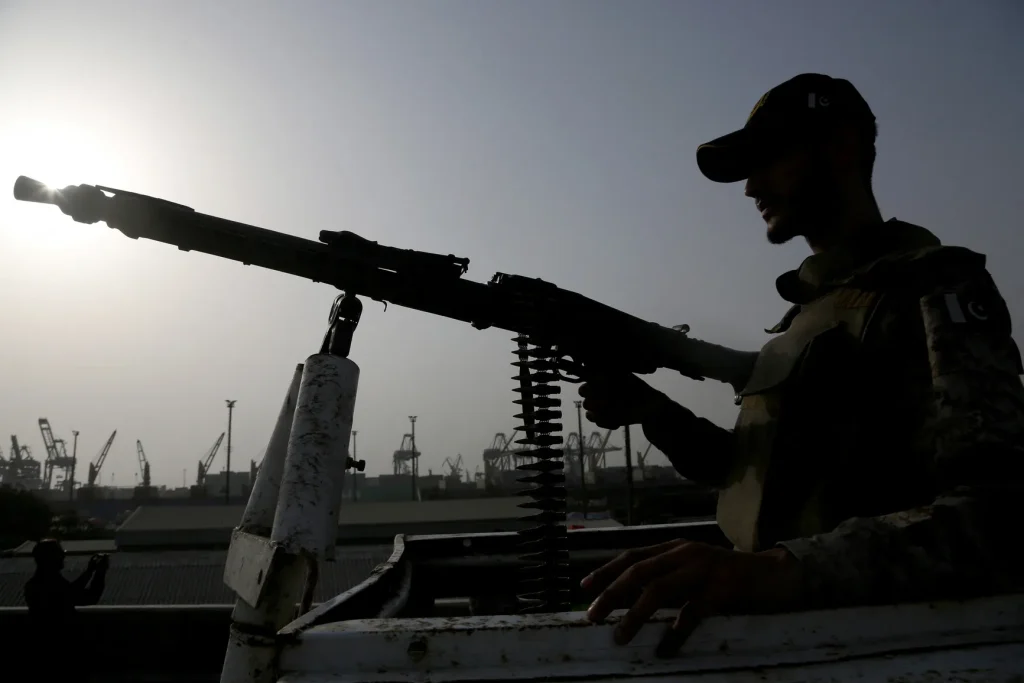In a sharp escalation of the ongoing conflict, Pakistan launched a major retaliatory strike against India, striking more than 20 Indian military locations across multiple regions. The military response was codenamed Operation Bunyan-un-Marsoos. Senior Pakistani security officials confirmed the operation on Saturday.
Officials described the Pakistan retaliatory strike as “precise and proportionate.” It came after India launched missile attacks on several Pakistani cities during the nights of May 5 and 6. India claimed its attacks were targeting militants in retaliation for last month’s Pahalgam attack in the Indian Illegally Occupied Jammu and Kashmir (IIOJK).
However, Indian missiles hit civilian areas inside Pakistan, causing casualties. This triggered Pakistan’s counterattack.
Security sources directly linked with the operation revealed the high-value Indian targets hit during the strikes:
-
Beas: A BrahMos missile storage facility was destroyed.
-
Udhampur: Pakistan missiles destroyed air defence systems and caused massive damage to the Udhampur Air Base.
-
Pathankot: The military airfield was struck with high precision.
-
Jalandhar: Ongoing strikes hit the airbase.
-
Gujarat: Several air bases and military posts were targeted.
-
Delhi Region: A missile was intercepted near Hisar. Authorities are monitoring Delhi as a potential next target.
-
Rajasthan: Strikes hit key military structures; damage assessments are ongoing.
-
Srinagar: At least 20 Indian soldiers died when the airbase was targeted.
-
Chandigarh: A weapons depot was neutralized.
-
Adampur Air Base: Pakistan forces destroyed an S-400 air defence system.
-
Sirsa: The airfield sustained damage.
-
Uri: Pakistan hit the Army Brigade HQ and supply depot.
-
Dehrangyari: Artillery positions were struck.
-
Rajouri: A military intelligence training facility was hit.
-
Halwara: Air Force station was also targeted.
-
LoC: Pakistani forces hit several Indian posts.
-
IIOJK: An Indian intelligence centre was attacked.
-
Bathinda: The airfield was struck.
According to top military officers, the Pakistan retaliatory strike was executed under a carefully planned strategy. The goal was to limit Indian military aggression by targeting only combat-related infrastructure. Officials said that civilian sites were avoided intentionally.
“This was a measured response under international law,” one senior officer said. “We struck only those facilities directly involved in India’s military aggression.”
Pakistan’s military action caused serious disruption to India’s air defence across its northern sector. Satellite images and surveillance footage confirmed heavy damage to Indian military assets.
Alongside physical strikes, Pakistan launched a large-scale cyberattack on Indian digital infrastructure:
-
70% of India’s electric supply was knocked out, especially in Maharashtra.
-
Several Indian government and defence websites were hacked, including:
-
BJP’s official website
-
Crime Research Investigation Agency
-
Mahanagar Telecommunication Corporation Limited (MTCL)
-
Bharat Earth Movers Limited (BEML)
-
All India Naval Technical Supervisory Staff Association
-
-
A key Indian military satellite was jammed.
Operation Bunyan-un-Marsoos now stands as one of the most intense and strategically calculated Pakistan retaliatory strikes in recent history. Both nations are nuclear powers, making the situation highly sensitive.
Islamabad has stated its willingness to de-escalate. However, it has placed the responsibility on New Delhi to halt hostilities. Officials described Pakistan’s position as “resolute yet responsible.”
The Ministry of Foreign Affairs in Pakistan is preparing to brief ambassadors from key countries. So far, India has not issued a formal response. State-run Indian media only acknowledged the ongoing clashes and confirmed casualties.
Global powers including the United Nations, United States, and China are closely observing the situation. Many have urged both sides to prevent further escalation.


